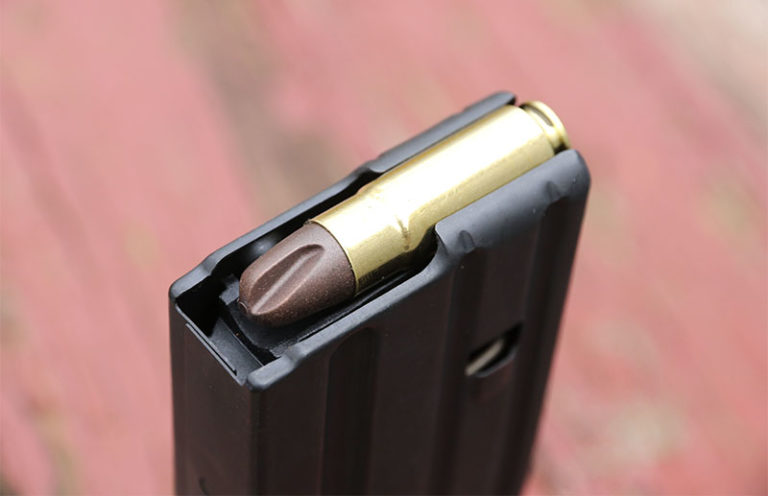
Turning the twenty-two-caliber AR-15 into a big-bore beast with .458 SOCOM.
Ever wonder just how big a bullet we can hurl out of the standard AR-15 package? Well, Marty Ter Weeme was at a backyard barbecue a couple of decades ago with some guys who can’t put on their résumés where they’ve been and what they’ve done. You know, the lads who now sport beards, go to dusty places and bring surprises to the miscreants they meet.
The question arose because those present had experience at shooting people and weren’t entirely happy with the results they were getting from the M855.
Call Me Thumper
The requirements were simple: It had to be an upper, or a rebuild, that’d work on a standard AR-15/M16/M4 lower. It had to use standard AR-15 magazines. And it had to hit like a sledgehammer.

Since the users wanted bullet choices that left out the usual suspects back in the pre-9/11 days, those rejected being potential cartridges that used pistol bullets. So, they chose the .458-inch bullet diameter. Next up, the case. What was the fattest case that’d fit through the barrel extension opening?
A .50 AE
However, that case was too short, and the rim too big. So, for the .458 SOCOM, Marty and Tony Rumore of Tromix chose lengthened .50 AE cases and had the brass maker trim the rims down from the .50 AE diameter of .514 to .473 inch.
If that latter number looks familiar, it is. It’s the standard rim diameter of the .30-06 family of cartridges, along with the 8mm Mauser and such. It’s also as big as you can make the AR-15 bolt face and still have enough locking lug metal left to be safe to shoot your rifle.
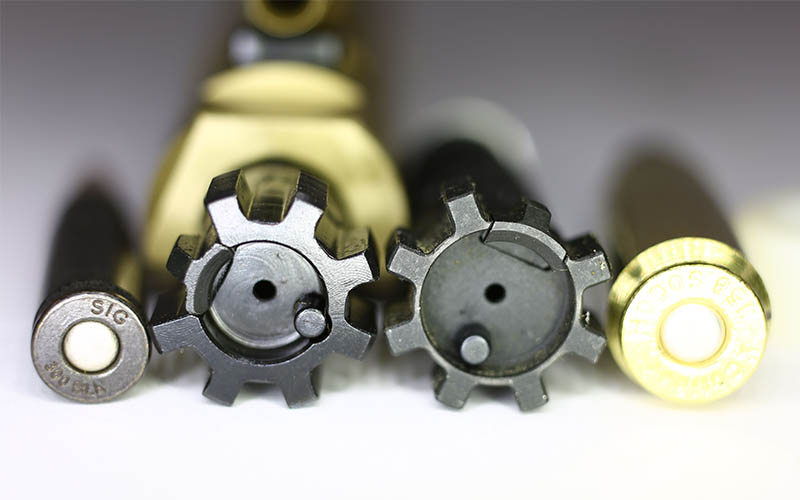
The next step was to decide how much of a case neck to provide and what kind of case capacity, all while keeping one idea in mind: It had to hit like the news of an impending IRS audit. What really decided the case neck dimension were the heaviest bullets—at 500 or 600 grains, you need a lot of neck tension to keep a bullet in place in the case, even if you’re hurling it at less than elephant-whacking velocities.
And the cleverness of the design means it’s a relatively easy build. Heck, it’s as easy as any of them, because you can count on the parts makers keeping things inside the AR-15 envelope. You don’t have to invest in special, proprietary buffer weights or springs. The gas tube you use is the same gas tube you’d use for any other build of the barrel length you’ve chosen.
And magazines are simple: You use regular AR mags. Now, that last part is a bit more, shall we say, variable, than the others. More on that in a bit.
Starting the Mission
I grabbed a Brownells barrel and bolt off the shelf and looked for build candidates. Oh, hey, there’s a complete rifle on the end of the rack with a shot-out bore. (Yes, Virginia, ammo used to be cheap enough that you could wear out a barrel just by shooting.) Out with the old, in with the new.
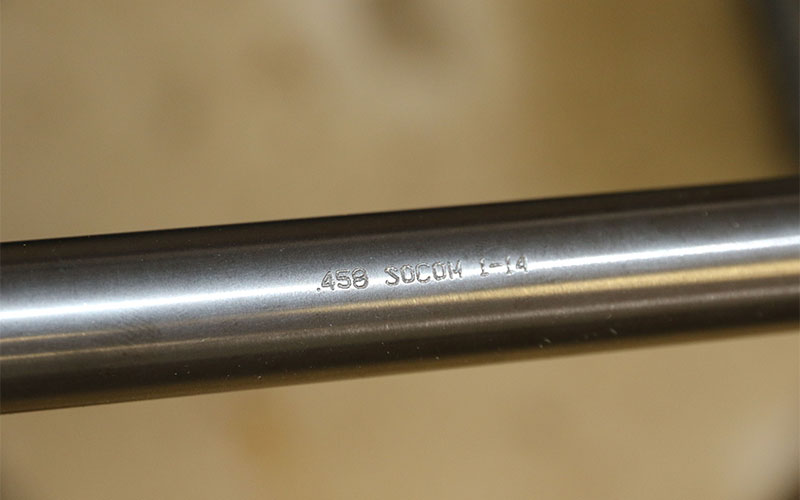
Old handguard off (so old it’s a quad-rail) and old barrel out. Then, plug the Brownells .458 SOCOM barrel into the upper, tighten the barrel nut (tight-loose-tight-loose-tight to alignment), install a gas tube into a gas block and then install that and tighten it into place. Pick the handguard back off the bench, install, align, tighten.
Grab a scope out of the scope drawer, in its mount, and put on top. Check alignment and also check eye relief. The .458 SOCOM comes back with a certain amount of authority, and you don’t want to be crowding the scope when you touch off one of the robust ones. The likely candidate that was up in the rotation was a Hi-Lux 1-4 in a LaRue QD mount.
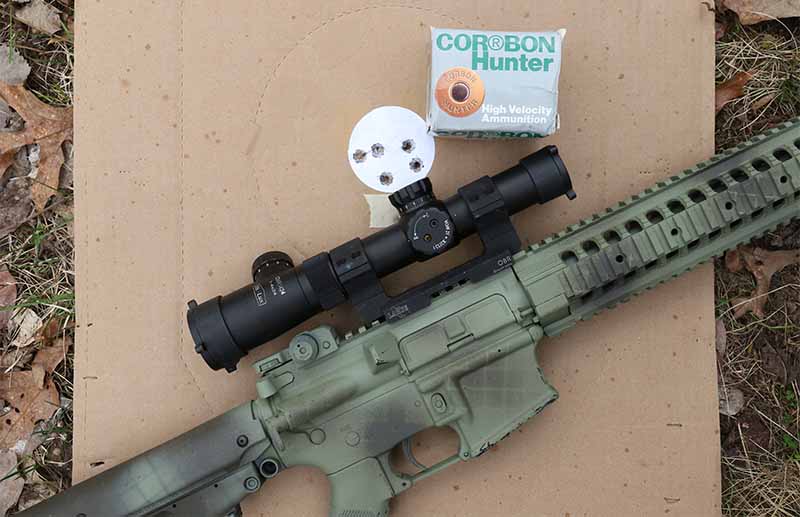
Luckily, the lower came with a stock on it that has a rubber recoil pad, because cushioning rubber is a handy thing to have on a rifle chambered in .458 SOCOM. The Magpul UBR stock and its rubber recoil pad promised to keep the .458 SOCOM from being too much of a good thing, unlike the hard plastic checkered buttplate you’d find on a mil-spec carbine lower.
Feeding the Beast
The .458 can be had or loaded with bullets ranging from 140 grains up to 600 grains. The lightest-weight ammunition (if we can consider something that tips scales at 140 grains as “light”) leaves your immediate vicinity at more 2,400 fps, depending on barrel length. If you’re using a carbine with a 16-inch barrel, you might fall a few fps short of that. If you’re using a rifle and a 20-inch barrel, you can step on the heels, or even elbow aside, 2,400 fps. That’d be with the Polycase ARX ammunition.
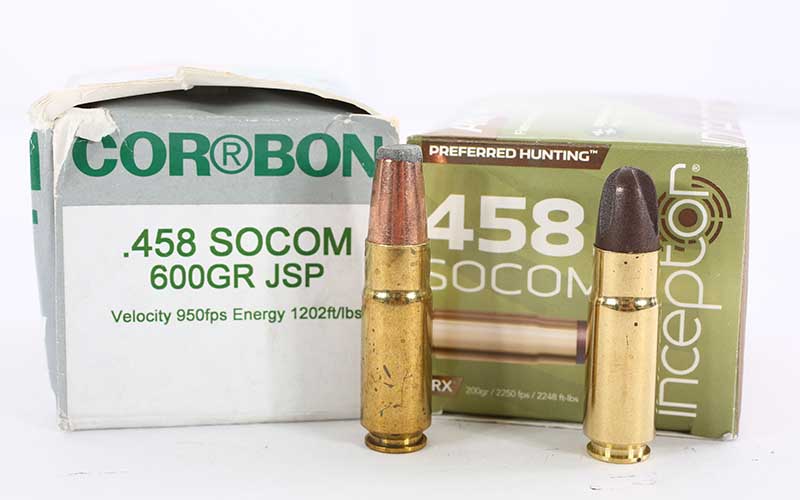
Up in the midrange bullets—300-, 350- and 400-grainers—you can jar your fillings with velocities in the 1,500- to 1,700-fps range. We’re talking about a 575 to 600 PF momentum.
It gets really interesting when you opt for the real heavyweights. If you move up to 500 grains, you can go for all the gusto, and generate some 1,300 fps out of a full-length barrel for a power factor of 650. Yowza! By comparison, a 12-gauge slug with a 1-ounce projectile at a listed 1,600 fps generates 700 PF, with a trajectory like a softball. The .458 SOCOM treads hard on its heels, but with a flatter (albeit still arcing) trajectory.

And This Out Of An AR-15
Where the .458 SOCOM gets to be giddy fun is when you go with heavyweight subsonics. A 600-grain JSP (which has no hope whatsoever of expanding, just to be clear) in the subsonic velocity region becomes an entertaining range time. The thump is impressive. The noise, not so much. And whatever you’re shooting at gets thumped…hard. If you then team it up with a suppressor like the Wilson Combat Whisper (which is built to withstand the .458 HAMR, so no worries about your .458 SOCOM), then you won’t even need hearing protection.
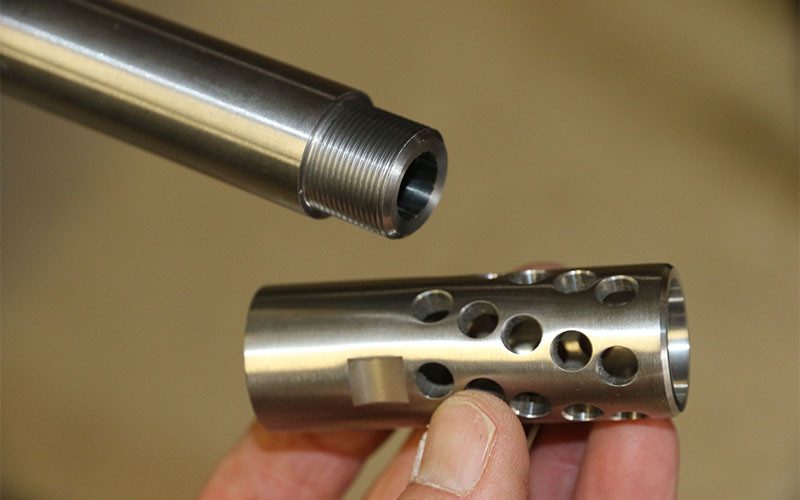
Well, actually…you might want some. If you’re shooting on a relatively short range, say a 25- or 50-yard backstop, the thump of the bullet hitting the hill might be loud enough that you want a bit of audio suppression.
Odds, Ends
Reloading isn’t difficult. The .458 is like any other bottlenecked rifle cartridge, so you’ll have to lube cases for resizing. Then, clean the lube off for loading. It uses large pistol primers and slow-burning pistol powders or fast-burning rifle powders. For the speedy loads and the heavyweights going through your suppressor, you’ll want to use jacketed bullets. For the heaviest-recoiling loads, you’ll also want to trim cases and apply a firm crimp along with good neck tension.
If you’re interested in lower-cost fun thumping, then you can use coated bullets and load subsonic. Acme bullets makes a .458 SOCOM-specific bullet that’s 576 grains in weight and given a bright red Hi-Tek coating. I have to point out that, unless you’re shooting at steel plates that are both rifle-rated and placed 100 yards away, you shouldn’t be shooting steel with any .458 SOCOM load. As stoutly as it thumps you, it hammers what it hits. Non-rifle-rated steel will be dented. Steel less than perfectly smooth may bounce back fragments—which is why you want to be 100 yards away.
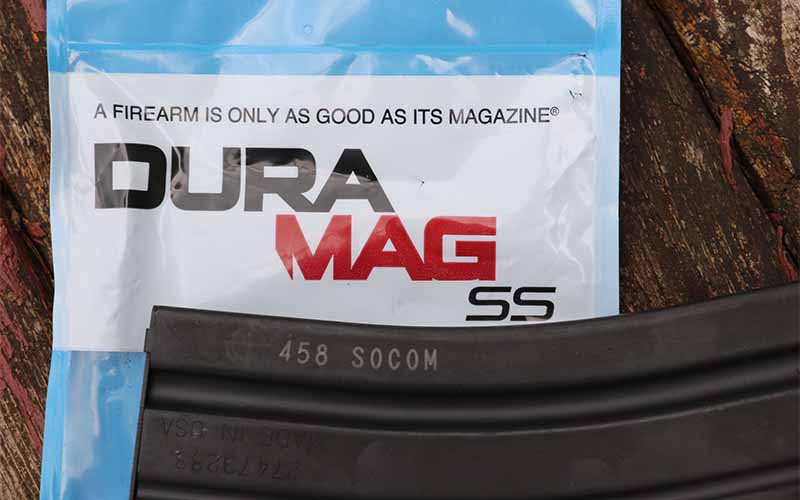
Oh, and the magazines? Yes, the idea was to make the .458 SOCOM feed out of standard AR magazines. And they usually do. But magazines can vary. You can burn up a lot of ammo determining if the mags you have and are already using will play well with your .458 ammo and rifle. May I suggest investing in 458-specific magazines? DuraMag makes .458-specific magazines, and the rounds are single-stack in the tube (as in any AR-sized magazine) but with .458-shaped feed lips and follower.
Go ahead, nickname your .458 SOCOM AR-15 “Thumper.” That’s what it does—on both ends.
Editor's Note: This article originally appeared in the June 2021 issue of Gun Digest the Magazine.
Get On Target With More AR Knowledge
- Buyer's Guide to the Best AR-15 Rifles for Any Budget
- AR-15 vs AR-10 – How Stoner’s Rifles Stack Up
- Best AR-15 Parts & Accessories
- Building an AR-15 Lower Receiver – Putting The Internals Together
- AR-15 Upper Receiver – How it Works
- AR Pistol Brace Buyer's Guide
- Best AR Pistols – Affordable Options
- Best Calibers for AR-15 Rifles

Next Step: Get your FREE Printable Target Pack
Enhance your shooting precision with our 62 MOA Targets, perfect for rifles and handguns. Crafted in collaboration with Storm Tactical for accuracy and versatility.
Subscribe to the Gun Digest email newsletter and get your downloadable target pack sent straight to your inbox. Stay updated with the latest firearms info in the industry.

![Best Concealed Carry Guns In 2025 [Field Tested] Wilson Combat EDC X9S 1](https://gundigest.com/wp-content/uploads/Wilson-Combat-EDC-X9S-1-324x160.jpg)


![Best 9mm Carbine: Affordable PCCs [Tested] Ruger Carbine Shooting](https://gundigest.com/wp-content/uploads/Ruger-Carbine-Shooting-100x70.jpg)
![Best AR-15: Top Options Available Today [Field Tested] Harrington and Richardson PSA XM177E2 feature](https://gundigest.com/wp-content/uploads/Harrington-and-Richardson-PSA-XM177E2-feature-100x70.jpg)

I have a wide variety of 5.56/.223 AR magazines that I’ve stuffed with .458 SOCOM rounds, never ran into any issues or jamming or anything yet. And we’re talking bargain basement 30 round generic AR magazines (I live in California, I bought them when we were on a magazine lull) which are now my “10 round” magazines with .458, I’ve loaded them up on my ten round AR mags, my poly-mags, everything. No issues. Maybe I’m just lucky.
Any advice on barrel length? I am building a 10.5″ fast twist (1:10) Thumper on a stock (not brace) MOE lower with a tank brake on the front. I was planning on 500gr projectiles. There is so much competing info on barrel length and bullet weight? Thoughts?
Thank you for the great article. I built my SOCOM as a dare and I wasn’t onboard with the .300 Blackout. My question is the buffer and buffer spring. I’ve went to the heaviest buffer I could find and a braided buffer spring to help reduce the recoil. Still trying to balance out the rifle with a new muzzle break. Running a 16” barrel and using 350 gr target rounds. Any information on that would be great
I love my .458 but it is very expensive to feed! Even hand loading, your talking $85-$90 for 50 rounds of brass and if you want the 500 grain bullets, you will be looking at $40 to $60 for a box of 50. Last I looked, factory ammo is running $50+ for 20 rounds. But the .458 is my home defense gun. It won’t penetrate bullet proof vests but I wouldn’t want to be on the receiving end. Great round.